Jenis Gatal Kulit: Punca, Jenis, Gambar & Cara Rawat Penyakit Kulit Dengan Berkesan

Jenis Gatal Pada Kulit Dan Gambarnya Gatal kulit merupakan masalah dermatologi yang sangat biasa dalam kalangan rakyat Malaysia. Ia boleh menjadi ringan dan sementara, atau kronik dan mengganggu kehidupan harian. Dalam artikel ini, kita akan mengenal pasti jenis-jenis gatal kulit, punca yang menyebabkannya, serta rawatan terbaik berdasarkan jenisnya, bersesuaian dengan iklim tropika dan gaya hidup kita. Apa Itu Gatal Kulit? Gatal kulit, atau pruritus, ialah sensasi yang menyebabkan keinginan untuk menggaru. Ia boleh berlaku di mana-mana bahagian tubuh dan mungkin disebabkan oleh pelbagai faktor termasuk alahan, jangkitan, atau penyakit dalaman. Punca Jenis Penyakit Gatal Kulit Antara punca utama gatal kulit termasuk: Alergi (Alahan) – Makanan, ubat-ubatan, habuk, atau bahan kimia kosmetik. Jangkitan kulit – Seperti kulat, bakteria, atau virus. Penyakit kulit kronik – Eczema, psoriasis, atau dermatitis. Gigitan serangga – Seperti nyamuk, kutu, atau hama. Keadaan kesihatan dalaman – Seperti diabetes, gangguan hati atau buah pinggang. Jenis Gatal Kulit 1. Eczema (Dermatitis Atopik) Gatal yang berulang dan disertai kemerahan, kulit kering, bersisik atau melepuh. Selalunya bermula sejak kecil dan dipengaruhi faktor genetik dan alahan. 2. Urtikaria (Hives) Timbul sebagai ruam merah atau bengkak kecil yang gatal. Boleh disebabkan makanan, ubat, atau cuaca panas. 3. Jangkitan Kulat (Tinea/Ringworm) Gatal berbentuk bulat, kemerahan, dengan bahagian tengah yang bersih. Sangat biasa di kawasan lipatan badan seperti ketiak atau celah paha. 4. Scabies (Kudis Buta) Punca dari hama kecil yang masuk ke dalam kulit. Simptom termasuk gatal teruk pada waktu malam, ruam kecil, dan kerak. 5. Psoriasis Penyakit autoimun yang menyebabkan kulit menebal, bersisik, dan sangat gatal. Biasanya berlaku di siku, lutut, dan kulit kepala. 6. Contact Dermatitis Reaksi kulit terhadap sentuhan bahan tertentu seperti sabun kuat, logam (nikel), atau lateks. Menyebabkan kulit gatal, merah, dan melepuh. Bagaimana Nak Bezakan Jenis Gatal? Jenis Gatal Ciri-ciri Utama Kawasan Biasa Eczema Kering, merah, bersisik, gatal Tangan, lipatan lengan, leher Urtikaria Bengkak merah sementara, sangat gatal Seluruh badan Jangkitan Kulat Bulat, bersisik, gatal Celah paha, kaki, ketiak Scabies Gatal waktu malam, ruam kecil Celah jari, pergelangan tangan Psoriasis Kulit menebal, sisik keperakan Siku, lutut, kepala Rawatan Gatal Kulit Berdasarkan Jenis Topikal (Sapuan) Krim steroid (untuk eczema, psoriasis) Krim antikulat (untuk jangkitan kulat) Krim antihistamin (untuk urtikaria) Oral (Makan) Antihistamin (mengurangkan gatal) Antibiotik atau antifungal (jika ada jangkitan) Imunosupresan (untuk psoriasis kronik) Penjagaan Harian Guna sabun hypoallergenic Elak mandi air panas terlalu lama Sentiasa lembapkan kulit selepas mandi Elakkan menggaru untuk mengurangkan luka sekunder Rawatan Klinik Pemeriksaan dermatologi Ujian alergi atau ujian kulit Terapi cahaya (untuk psoriasis) Bila Perlu Jumpa Doktor? Segera dapatkan rawatan jika: Gatal kulit berpanjangan lebih 2 minggu Disertai demam, luka bernanah, atau kulit mengelupas teruk Mengganggu tidur atau aktiviti harian Terdapat tanda-tanda jangkitan atau pembengkakan luar biasa Pencegahan Gatal Kulit Kekalkan kelembapan kulit Elakkan penggunaan produk penjagaan kulit yang mengandungi alkohol atau pewangi kuat Guna pakaian kapas yang selesa dan tidak panas Kekalkan kebersihan diri Jaga pemakanan dan elakkan makanan pencetus alahan Cara Rawat Gatal Kulit Seperti Jerawat di Klinik 1. Laser & Cahaya Fractional CO2 Laser – rawat parut dan jerawat aktif. Pulsed Dye Laser (PDL) – kurangkan kemerahan dan keradangan. Nd:YAG – kawal jerawat aktif & kelenjar minyak. Blue Light / PDT – bunuh bakteria penyebab jerawat. 2. Chemical Peels Salicylic acid – bersihkan liang pori & eksfoliasi. Glycolic acid – bantu parut & jerawat ringan. Jessner/TCA – eksfoliasi lebih dalam & cegah parut. 3. Microneedling & PRP Microneedling – rangsang kolagen, baik parut. Microneedling + PRP – percepat penyembuhan & kurangkan parut. 4. Ekstraksi & Manual Comedone extraction – buang blackhead & whitehead. Cyst drainage – untuk jerawat cyst di bawah pengawasan doktor. 5. Skin Booster & Suntikan Hyaluronic acid skin booster – lembapkan kulit & kurangkan keradangan. Mesoterapi – untuk jerawat ringan & cegah parut. Soalan Lazim (FAQ) 1. Apakah gatal kulit yang paling biasa dalam kalangan orang dewasa? Eczema, urtikaria, dan jangkitan kulat adalah antara yang paling biasa dialami oleh orang dewasa, terutama mereka yang tinggal di kawasan panas dan lembap. 2. Adakah gatal kulit boleh jadi tanda penyakit serius? Ya, dalam beberapa kes, gatal berpanjangan boleh menjadi tanda masalah dalaman seperti penyakit hati, buah pinggang, atau gangguan tiroid. 3. Bagaimana cara hilangkan gatal kulit dengan cepat? Gunakan krim antihistamin, mandi air suam, dan elakkan menggaru. Jika tidak reda, dapatkan nasihat doktor. 4. Apakah perbezaan antara gatal akibat kulat dan alergi? Gatal akibat kulat biasanya berbentuk bulat dan bersisik, manakala gatal akibat alergi muncul secara tiba-tiba, gatal menyeluruh, dan boleh hilang dengan cepat. 5. Adakah perlu buat ujian kulit untuk kenal pasti jenis gatal? Jika gatal kulit berpanjangan atau berulang, doktor mungkin mencadangkan ujian kulit atau ujian alergi untuk mengetahui puncanya dengan tepat. Kesimpulan Masalah gatal kulit bukan sahaja menjejaskan keselesaan tetapi juga kualiti hidup. Dengan memahami jenis-jenis gatal kulit, anda boleh mendapatkan rawatan yang betul dan mencegahnya daripada menjadi lebih teruk. Jika simptom berterusan, jangan tangguh untuk berjumpa doktor pakar kulit. Terdapat pelbagai jenis gatal pada kulit dan gambarnya yang sering dialami oleh masyarakat di Malaysia. Memahami jenis gatal kulit adalah penting untuk mendapatkan rawatan yang betul bagi setiap jenis gatal kulit seperti eczema, urtikaria, jangkitan kulat, dan psoriasis. Setiap jenis gatal kulit mempunyai simptom, punca, dan rawatan yang berbeza. Jika anda mengalami sebarang jenis gatal kulit, anda dinasihatkan untuk berjumpa doktor bagi mengenal pasti jenis gatal kulit yang anda alami agar rawatan yang sesuai dapat diberikan berdasarkan jenis gatal kulit tersebut.
PRP Treatment Malaysia: Benefits, Procedure, and Recovery

Platelet-rich plasma PRP treatment has emerged as a revolutionary option in aesthetic medicine, dermatology, and regenerative therapy. Known for its natural healing properties, PRP hair therapy leverages your own blood components to stimulate collagen production, hair regrowth, and overall skin rejuvenation. Whether you are struggling with thinning hair, acne scars, or joint pain, understanding how PRP works and its benefits can help you make an informed decision. What is Platelet-Rich Plasma Therapy or PRP Treatment? PRP, or platelet-rich plasma treatment, is a non-surgical, minimally invasive procedure that uses the plasma component of your own blood, which is rich in platelets and growth factors. These growth factors play a crucial role in tissue repair, collagen stimulation, and cellular regeneration. During the procedure, a small sample of your blood is drawn and processed in a centrifuge to separate the platelet-rich plasma from other components. This concentrated plasma is then injected into the target area—whether it’s the scalp, face, or joints—to stimulate healing and rejuvenation. PRP therapy is considered safe because it uses autologous blood, meaning there is minimal risk of allergic reactions or infections. How PRP Treatment Works Platelet-rich plasma therapy or PRP treatment works through the body’s natural healing mechanisms. Platelets contain essential growth factors that activate stem cells and promote collagen synthesis. Here’s a step-by-step overview of the process: Blood Collection: A small amount of blood is drawn from your arm. Centrifugation: The blood is spun in a centrifuge to isolate platelet-rich plasma from red blood cells and plasma. Activation: Platelets are activated to release growth factors. Injection: The PRP is carefully injected into the targeted area—scalp, skin, or joint. Healing Process: The growth factors stimulate tissue regeneration, collagen production, and improved cellular function. This regenerative process is why PRP is used in various treatments, from hair regrowth therapy to anti-aging facial treatments and even joint pain relief in orthopedic medicine. Benefits of PRP Treatment (Platelet-Rich Plasma Therapy) PRP therapy has become highly sought after because of its versatility and natural approach. Here are some key benefits: 1. PRP Hair Loss Injection and Hair Regrowth PRP injection for hair loss is one of the most popular applications. It helps stimulate dormant hair follicles, increase hair density, and improve hair thickness over multiple sessions. PRP is particularly effective for androgenic alopecia and thinning hair in both men and women. 2. Skin Rejuvenation PRP treatment for face and skin rejuvenation, also known as a PRP facial, reduces fine lines, wrinkles, and acne scars. By stimulating collagen production and improving skin elasticity, patients experience smoother, firmer, and more youthful-looking skin. 3. Acne Scar Treatment PRP injections promote healing in areas with acne scars by encouraging tissue regeneration. Combined with microneedling, PRP injection can significantly improve skin texture and reduce scar appearance. 4. Joint Pain Relief PRP injection knee therapy is increasingly used in orthopedics to treat joint pain, tendon injuries, and osteoarthritis. The growth factors in PRP accelerate tissue repair and reduce inflammation, often helping patients regain mobility without invasive surgery. 5. Non-Surgical and Safe Since PRP uses your own blood, it carries minimal risk of infection or allergic reactions. The procedure is minimally invasive, has little downtime, and is suitable for a wide range of patients. Who is Suitable for PRP Treatment? PRP treatment (Platelet-rich plasma) is suitable for individuals seeking natural solutions for hair loss, skin rejuvenation, or joint pain. Ideal candidates include: Adults with thinning hair or androgenic alopecia Individuals with fine lines, wrinkles, or acne scars Patients with mild to moderate joint injuries or osteoarthritis Those seeking minimally invasive, non-surgical cosmetic procedures However, PRP injection may not be suitable for individuals with blood disorders, severe anemia, or certain chronic illnesses. Consulting with a certified dermatologist, trichologist, or orthopedic specialist is essential before starting treatment. PRP Treatment Procedure and Recovery The procedure typically takes 45–60 minutes per session. Most patients report minimal discomfort during the injection. Topical anesthesia may be applied for sensitive areas such as the scalp or face. Recovery Tips: Mild swelling or redness may occur for 1–2 days. Avoid direct sun exposure immediately after treatment. Follow your practitioner’s advice on skincare or hair care routines. Multiple sessions (usually 3–6) are recommended for optimal results. The results gradually appear over several weeks as collagen production and tissue regeneration progress. PRP Treatment Cost in Malaysia The cost of PRP treatment varies depending on the area treated and the number of sessions required. On average: PRP for hair loss: RM 1,500 – RM 3,500 per session PRP facial / skin rejuvenation: RM 1,200 – RM 2,800 per session PRP for joints: RM 2,000 – RM 4,500 per joint Prices may vary based on the clinic’s expertise, technology, and location. It’s essential to choose a reputable aesthetic or medical clinic with certified professionals. PRP vs Other Treatments PRP therapy is often compared with other regenerative or cosmetic treatments: PRP vs Mesotherapy: PRP uses autologous blood and growth factors, while mesotherapy involves vitamins and synthetic compounds. PRP provides more natural regenerative effects. PRP vs Hair Transplant In Malaysia: PRP stimulates existing hair growth, whereas hair transplant redistributes hair follicles. PRP is less invasive and complements hair transplant procedures. PRP vs Chemical Peels / Lasers: PRP enhances natural tissue regeneration, whereas peels and lasers exfoliate or resurface the skin. PRP can be combined with these treatments for better results. FAQs About PRP Treatment 1. How long does PRP treatment last?PRP therapy results are gradual, typically visible after 3–6 sessions. Hair regrowth or skin rejuvenation benefits may last 12–18 months, depending on maintenance and lifestyle. 2. Is PRP treatment painful?Most patients experience mild discomfort during injections. Topical anesthetics can minimize pain, making the procedure tolerable. 3. Are there any side effects of PRP therapy?PRP is generally safe. Mild redness, swelling, or bruising may occur at the injection site but usually resolves within a few days. 4. Can PRP be combined with other treatments?Yes. PRP is often combined with microneedling, laser therapy, or hair transplant procedures to enhance results. 5. How many PRP sessions
Recognizing the Signs of Aging: What to Expect and How to Address Them
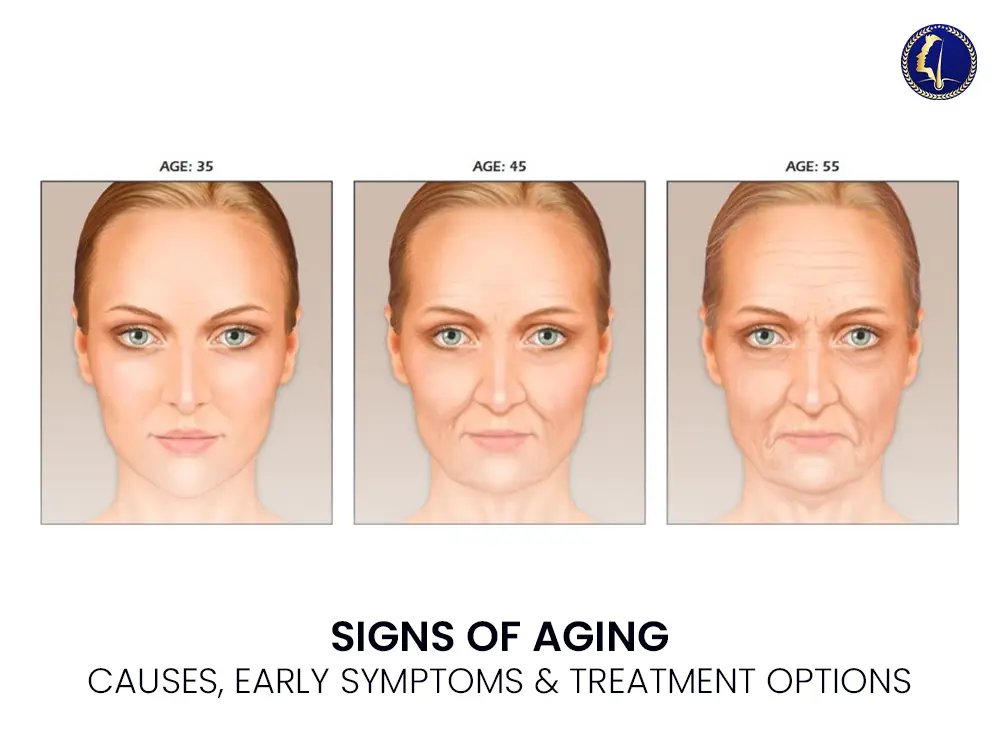
Signs of Aging Introduction Aging is a complex biological process influenced by both intrinsic and extrinsic factors. While it is a natural part of life, the visible signs of aging can affect an individual’s appearance, self-esteem, and overall skin health. This article provides a comprehensive overview of the most common signs of aging, their clinical causes, and evidence-based treatment options—guided by medical understanding and dermatological science. What Are the Common Signs of Aging? The signs of aging manifest differently for each individual, influenced by genetics, lifestyle, environment, and underlying health conditions. Below are the most clinically recognized dermatological signs: 1. Fine Lines and Wrinkles These are among the earliest and most noticeable signs. Wrinkles typically appear due to the breakdown of collagen and elastin—key proteins that support skin firmness and elasticity. Dynamic wrinkles (e.g., crow’s feet) result from repeated facial expressions. Static wrinkles form over time due to volume loss and skin laxity. 2. Loss of Skin Elasticity and Sagging As skin ages, it loses structural support due to the degradation of collagen and hyaluronic acid. This results in sagging skin, especially around the cheeks, jawline, and neck. 3. Age Spots and Hyperpigmentation Also known as solar lentigines, age spots are flat, brown lesions caused by prolonged UV exposure. They indicate photoaging, a condition that accelerates skin aging. 4. Thinning Skin The epidermal and dermal layers gradually become thinner, making the skin appear translucent and more susceptible to bruising and damage. 5. Dryness and Texture Changes Sebum production decreases with age, leading to drier skin. Textural changes such as roughness or scaliness are common, especially in postmenopausal women. 6. Volume Loss (Fat and Muscle) Facial volume diminishes with age due to the reduction in subcutaneous fat, bone resorption, and muscle atrophy. This contributes to a hollow appearance around the eyes and cheeks. 7. Visible Blood Vessels and Redness Aging skin may exhibit telangiectasia (broken capillaries) and increased facial redness due to cumulative sun exposure and thinning skin. Causes of Aging: Intrinsic vs. Extrinsic Factors 🔬 Intrinsic Aging (Chronological Aging) Genetically programmed biological changes. Typically starts in the late 20s to early 30s. Slower skin cell turnover, reduced collagen synthesis, and hormonal shifts. 🌞 Extrinsic Aging (Environmental Factors) Ultraviolet (UV) radiation is the most significant external contributor (responsible for up to 90% of visible aging). Pollution, smoking, alcohol, stress, and diet also accelerate skin aging through oxidative stress and inflammation. Medical & Dermatological Treatment Options A range of treatments can help mitigate or reverse visible signs of aging, depending on the severity and type of concern. 1. Topical Treatments Retinoids (Tretinoin, Retinol): Stimulate collagen and improve cell turnover. Antioxidants (Vitamin C, E): Combat oxidative stress and brighten skin. Peptides: Help repair skin structure and signal cellular regeneration. Sunscreens: Essential for preventing further UV damage. 2. Non-Invasive Procedures Microneedling: Enhances collagen production via controlled skin injury. Chemical Peels: Exfoliate damaged skin layers and improve tone/texture. Laser Therapy (e.g., Fraxel): Targets pigmentation and wrinkles. Radiofrequency and Ultrasound: Tighten skin by stimulating deeper dermal layers. 3. Injectables Botulinum Toxin (Botox): Reduces dynamic wrinkles. Dermal Fillers (Hyaluronic Acid, Sculptra): Restore volume and smooth folds. 4. Lifestyle Modifications Hydration, a nutrient-rich diet, avoiding smoking, and managing stress support overall skin health and slow the aging process. Preventive Care & Patient Education Educating patients on preventive measures is key to managing aging effectively: Daily broad-spectrum sunscreen (SPF 30+) Gentle skincare routines avoiding harsh scrubs Regular dermatological check-ups Avoidance of tanning beds and excessive sun exposure Antioxidant-rich diet and hydration Dermatologists and medical professionals should personalize treatment plans based on skin type, Fitzpatrick classification, and individual aging patterns. Frequently Asked Questions (FAQs) 1. What age do signs of aging usually appear? Most people begin to notice early signs like fine lines in their late 20s to early 30s, although genetics and lifestyle can accelerate or delay this process. 2. Can aging be reversed? While aging can’t be completely reversed, medical treatments such as retinoids, microneedling, and laser therapy can significantly reduce the appearance of aging signs. 3. Are over-the-counter anti-aging creams effective? Some OTC products with ingredients like retinol, peptides, and vitamin C can improve mild signs of aging, though clinical-grade treatments often yield more dramatic results. 4. How does sun exposure affect skin aging? UV radiation is a primary cause of extrinsic aging, leading to pigmentation, collagen breakdown, and increased skin laxity. 5. Is microneedling safe for aging skin? Yes, when performed by a qualified medical professional, microneedling is safe and effective for stimulating collagen and improving skin texture in aging individuals. Conclusion Understanding the signs of aging from a medical and dermatological perspective empowers both patients and providers to take proactive steps. Whether you’re in your 30s or 60s, there’s a range of safe, evidence-based interventions to maintain skin health and confidence. Consult a board-certified dermatologist to develop a tailored plan aligned with your skin’s unique needs and aging profile. The signs of aging can appear earlier than expected if proper skincare is not maintained. Common signs of aging include fine lines, wrinkles, sagging skin, and age spots. Recognizing the signs of aging early allows individuals to address these signs of aging with appropriate treatments. Dermatologists often assess the signs of aging to determine the best anti-aging strategy. Whether it’s lifestyle changes or clinical interventions, understanding the signs of aging is key to managing the visible signs of aging over time.
Tips Kecantikan Kulit Wajah: Pendekatan Dermatologi untuk Kulit Sihat dan Berseri

Tips Kecantikan Kulit Wajah Penjagaan kulit wajah bukan sahaja berkait dengan aspek kosmetik tetapi juga kesihatan dermatologi. Kulit merupakan organ paling besar dan berperanan sebagai pelindung utama terhadap faktor luaran seperti pencemaran, sinaran UV dan jangkitan. Oleh itu, memahami cara penjagaan kulit yang betul dari sudut perubatan oleh klinik kecantikan kuala lumpur adalah penting untuk mencegah masalah seperti jerawat, hiperpigmentasi, dan penuaan pramatang. Artikel ini menghimpunkan tips kecantikan kulit wajah yang disokong oleh sains dermatologi, serta praktikal untuk diamalkan oleh semua jenis kulit. 1. Pembersihan Wajah yang Tepat Langkah paling asas dan penting dalam rutin penjagaan kulit adalah pembersihan wajah. Pembersih yang betul membantu menghapuskan kotoran, sebum berlebihan, dan sisa solekan yang boleh menyumbat pori-pori. Cadangan dermatologi: Gunakan pembersih ber-pH seimbang (5.5) untuk mengekalkan lapisan asid semula jadi kulit. Elakkan sabun yang keras kerana boleh mengganggu mikrobiom kulit. 2. Penggunaan Bahan Aktif Berdasarkan Masalah Kulit Rawatan kulit yang berkesan perlu disesuaikan dengan masalah kulit individu. Berikut adalah bahan aktif yang terbukti secara klinikal: Niacinamide: Mengurangkan kemerahan, memperbaiki fungsi penghadang kulit. Retinoid: Melawan tanda-tanda penuaan dan mempercepatkan pembaharuan sel. Salicylic Acid: Sesuai untuk kulit berjerawat kerana ia menembusi pori dan menyingkirkan minyak tersumbat. Vitamin C: Antioksidan kuat yang mencerahkan kulit dan mengurangkan pigmentasi. 3. Perlindungan Matahari Setiap Hari Pendedahan kepada sinaran UV adalah punca utama penuaan kulit dan pigmentasi. Justeru, penggunaan pelindung matahari (sunscreen) dengan sekurang-kurangnya SPF 30 adalah wajib walaupun berada dalam rumah atau cuaca mendung. Nota klinikal: Sinar UVA menembusi awan dan kaca tingkap. Gunakan sunscreen spektrum luas (broad-spectrum) dan ulang sapuan setiap 2 jam jika berpeluh atau berenang. 4. Hidrasi dan Penggunaan Pelembap Kulit yang terhidrat dengan baik lebih sihat dan tahan terhadap iritasi. Kekeringan boleh merosakkan lapisan pelindung kulit dan menyebabkan kulit kelihatan kusam. Rekomendasi: Gunakan pelembap mengandungi humektan seperti glycerin dan hyaluronic acid. Amalkan pengambilan air mencukupi (minimum 2 liter sehari) untuk sokongan dalaman. 5. Amalan Gaya Hidup Sihat Faktor dalaman juga mempengaruhi kesihatan kulit. Ini termasuk: Tidur mencukupi: Regenerasi kulit berlaku semasa tidur malam. Diet seimbang: Antioksidan dari sayur dan buah membantu melindungi sel kulit. Pengurangan tekanan: Tekanan berlebihan boleh meningkatkan hormon kortisol yang mencetuskan jerawat. Kepentingan Rutin Malam Berbanding Siang Pada waktu malam, kulit berada dalam fasa pemulihan. Oleh itu, produk aktif seperti retinoid dan AHA paling sesuai digunakan pada waktu malam. Waktu siang pula perlu memberi fokus pada perlindungan dan hidrasi. Kebersihan Alat Solek dan Sarung Bantal Bersihkan berus solekan seminggu sekali untuk mencegah pertumbuhan bakteria. Tukar sarung bantal sekurang-kurangnya dua kali seminggu bagi mengelakkan penularan minyak dan kotoran pada wajah. Soalan Lazim (FAQ) Tentang Kecantikan Kulit Wajah 1. Adakah produk semulajadi lebih selamat berbanding produk kimia? Tidak semestinya. Bahan semula jadi juga boleh menyebabkan alahan. Yang penting ialah keselamatan dan keberkesanan bahan berdasarkan bukti klinikal, bukan sama ada ia semulajadi atau tidak. 2. Berapa kerap saya perlu melakukan eksfoliasi? Eksfoliasi (pengelupasan) perlu dilakukan 1–2 kali seminggu. Terlalu kerap boleh merosakkan lapisan pelindung kulit dan menyebabkan sensitiviti. 3. Adakah kulit berminyak perlu pelembap? Ya. Kulit berminyak masih memerlukan pelembap untuk mengekalkan keseimbangan hidrasi. Gunakan pelembap ringan dan bebas minyak (oil-free). 4. Bolehkah jerawat dipicit untuk mempercepatkan penyembuhan? Tidak digalakkan. Memicit jerawat boleh menyebabkan keradangan lebih teruk dan berisiko meninggalkan parut kekal. 5. Apakah usia sesuai untuk mula menggunakan produk anti-penuaan? Secara umum, usia pertengahan 20-an adalah sesuai untuk mula menggunakan produk pencegahan seperti antioksidan dan retinoid ringan, bergantung kepada jenis kulit. Kesimpulan Kecantikan kulit wajah memerlukan pendekatan menyeluruh yang melibatkan rutin harian, pemilihan produk berdasarkan sains dermatologi, dan gaya hidup sihat. Pengetahuan tentang fungsi bahan aktif dan kepentingan perlindungan matahari akan membantu mencegah masalah kulit dari awal lagi. Sebarang rawatan kulit yang melibatkan perubahan besar, seperti penggunaan retinoid atau prosedur klinikal, wajar dilakukan di bawah pengawasan pakar dermatologi bertauliah.
Finasteride & Minoxidil: Rawatan Rambut Gugur Paling Berkesan di Malaysia
Rambut merupakan mahkota penting bagi setiap individu, tidak kira lelaki mahupun wanita. Namun, keguguran rambut kini menjadi masalah biasa yang memberi kesan kepada keyakinan diri dan penampilan. Nasib baik, dua rawatan utama yang terbukti berkesan – Finasteride dan Minoxidil – semakin popular di kalangan mereka yang ingin memulihkan rambut yang gugur. Dalam artikel ini, kita akan mengenali bagaimana dua bahan ini berfungsi, keberkesanannya, serta siapa yang sesuai menggunakannya. Apakah Punca Rambut Gugur? Rambut gugur boleh disebabkan oleh pelbagai faktor: Genetik – Keturunan yang mempunyai sejarah botak atau rambut nipis. Hormon – Ketidakseimbangan hormon, terutamanya DHT (Dihydrotestosterone), menyebabkan folikel rambut mengecut. Tekanan & gaya hidup – Tekanan berpanjangan, diet tidak seimbang dan kurang tidur menyumbang kepada keguguran. Penuaan – Proses semula jadi yang menyebabkan rambut menipis seiring usia. Finasteride: Penyekat Hormon DHT Finasteride ialah ubat preskripsi yang mengurangkan hormon DHT, penyebab utama kebotakan lelaki. Bagaimana Ia Berfungsi:Finasteride menyekat enzim yang menukar testosteron kepada DHT. Apabila DHT berkurang, folikel rambut menjadi lebih aktif dan mampu menumbuhkan semula rambut. Kelebihan: Mengurangkan keguguran secara drastik. Menyuburkan semula folikel rambut. Hasil dapat dilihat selepas 3-6 bulan. Siapa Yang Boleh Menggunakannya: Lelaki dewasa sahaja. Tidak sesuai untuk wanita, terutamanya wanita hamil, kerana boleh memberi kesan kepada janin. Minoxidil: Merangsang Pertumbuhan Rambut Minoxidil pula ialah rawatan topikal yang disapu terus ke kulit kepala. Cara Tindakan:Ia meluaskan saluran darah di kulit kepala, meningkatkan aliran darah dan nutrien kepada folikel rambut. Ini merangsang pertumbuhan rambut baru dan mengurangkan fasa rambut gugur. Jenis Produk: Cecair atau buih (foam). Kepekatan biasa: 2% dan 5%. Kelebihan: Sesuai untuk lelaki dan wanita. Mudah digunakan di rumah. Tidak memerlukan preskripsi (untuk formulasi biasa). Gabungan Finasteride & Minoxidil: Lebih Efektif Kajian menunjukkan bahawa penggunaan kedua-dua Finasteride dan Minoxidil serentak memberikan hasil yang lebih baik. Finasteride bertindak dari dalam, manakala Minoxidil membantu dari luar. Kesan yang boleh dijangka: Rambut lebih lebat dalam 4-6 bulan. Kurang keguguran semasa mandi atau menyikat. Kawasan botak mula tertutup dengan rambut baru. Kesan Sampingan yang Perlu Diketahui Finasteride: Penurunan nafsu seksual. Masalah ereksi (jarang). Perubahan mood (sangat jarang). Minoxidil: Kulit kepala kering atau gatal. Rambut gugur sementara pada permulaan (reaksi normal). Iritasi jika digunakan berlebihan. Penting untuk mendapatkan nasihat doktor sebelum memulakan rawatan, terutamanya Finasteride. Cara Guna yang Betul Finasteride (oral): 1 mg sehari. Waktu tetap, contohnya selepas sarapan. Minoxidil (topikal): Sapu dua kali sehari pada kulit kepala yang kering. Elakkan mencuci rambut selama sekurang-kurangnya 4 jam selepas sapuan. Bila Boleh Nampak Kesan? Ramai pengguna berasa kecewa kerana tidak nampak hasil serta-merta. Namun, perlu difahami bahawa kitaran rambut memerlukan masa. Jangkaan realistik: 3 bulan pertama: Keguguran mungkin bertambah (proses normal dipanggil ‘shedding’). 3–6 bulan: Rambut baru mula tumbuh. 6–12 bulan: Perubahan ketara dapat dilihat. Rawatan Alternatif yang Popular Sekiranya anda mencari pilihan semula jadi atau tambahan, berikut adalah beberapa cadangan: Minyak rosemary dan peppermint – membantu peredaran darah kulit kepala. Suplemen biotin, kolagen & zink. Shampoo anti-DHT yang mesra kulit. Namun, hasilnya tidak secekap Finasteride atau Minoxidil dalam ujian klinikal. Soalan Lazim (FAQ) 1. Adakah saya perlu guna Finasteride seumur hidup?Ya, kerana jika dihentikan, tahap DHT akan kembali meningkat dan rambut boleh gugur semula. 2. Adakah Minoxidil sesuai untuk wanita?Ya, tetapi disyorkan gunakan kepekatan 2% sahaja melainkan disarankan oleh doktor. 3. Perlukah saya buat pemeriksaan doktor sebelum mulakan rawatan?Sangat digalakkan, terutamanya untuk Finasteride yang memerlukan preskripsi. 4. Bolehkan remaja bawah 18 tahun guna Finasteride?Tidak disyorkan, kecuali di bawah pengawasan pakar dermatologi. 5. Apa akan jadi jika berhenti rawatan?Kebiasaannya rambut yang tumbuh semula akan gugur kembali dalam beberapa bulan. Kesimpulan Finasteride dan Minoxidil merupakan rawatan yang terbukti berkesan untuk masalah rambut gugur – terutama sekali jika dimulakan pada peringkat awal. Bagi mereka yang inginkan hasil semula jadi dan kekal, kombinasi ini adalah pilihan terbaik. Namun, pastikan anda mengikut arahan penggunaan, bersabar dengan prosesnya, dan berbincang dengan pakar jika perlu. Masalah rambut gugur boleh dikawal — dengan tindakan yang betul dan konsisten, rambut anda boleh kembali sihat dan menawan. GLOJAS Specialist Clinic offers expert hair loss treatment through personalized, evidence-based plans developed by board-certified specialists. Using FDA- and CE-approved technologies like PRP therapy and precision hair restoration, we ensure safe, effective results. Comprehensive aftercare and follow-up support reinforce patient trust, making GLOJAS a reliable authority in hair restoration solutions. Read More : Hair Transplant Malaysia
Unlocking the Power of Finasteride for Hair Loss: What You Need to Know

Hair loss affects millions of men and women worldwide, often leading to reduced self-esteem and confidence. Among the available treatments, finasteride stands out as one of the most effective FDA-approved medications for androgenetic alopecia, commonly known as male pattern baldness. In this comprehensive guide, we’ll explore what finasteride is, how it works, its benefits and risks, and who it’s best suited for. What Is Finasteride? Finasteride is an oral prescription medication primarily used to treat male pattern hair loss and benign prostatic hyperplasia (BPH). Marketed under brand names like Propecia (1 mg for hair loss) and Proscar (5 mg for prostate enlargement), finasteride works by inhibiting type II 5-alpha-reductase, the enzyme responsible for converting testosterone into dihydrotestosterone (DHT). Excess DHT shrinks hair follicles over time, causing thinning hair and eventual hair loss. By reducing DHT levels in the scalp, finasteride slows hair loss and promotes hair regrowth in many users. How Does Finasteride Work for Hair Loss? The key mechanism behind finasteride is its DHT-blocking ability. DHT is a potent androgen (male hormone) that plays a significant role in hair follicle miniaturization in genetically predisposed individuals. When hair follicles shrink, they produce thinner, weaker hairs and eventually stop growing altogether. Finasteride reduces scalp DHT levels by up to 60–70%, helping to: Prevent further hair thinning Improve hair density Stimulate regrowth in some areas, especially at the vertex (crown) of the scalp Evidence-Based Effectiveness Numerous clinical studies have validated finasteride’s effectiveness. In a landmark 5-year study published in the Journal of the American Academy of Dermatology, 90% of men who took 1 mg of finasteride daily experienced no further hair loss, and 65% saw noticeable hair regrowth. Other research shows finasteride can maintain or improve hair count over several years, making it a long-term solution when used consistently. Who Can Benefit from Finasteride? Finasteride is primarily prescribed for men aged 18 to 41 experiencing early to moderate stages of androgenetic alopecia. It’s most effective when taken early in the hair loss process, ideally before complete baldness has occurred. Women are generally not prescribed finasteride for hair loss due to hormonal differences and potential risks during pregnancy, although some off-label usage under strict medical supervision exists. Ideal Candidates: Men with thinning at the crown or receding hairline Individuals looking for a long-term medical solution Patients committed to daily use and regular follow-up How Long Does It Take to See Results? Hair growth is a slow process. Most users begin to see results within 3 to 6 months, with maximum results often visible after 12 months of continuous use. Initial shedding may occur within the first few months. This is normal and often a sign that older, miniaturized hairs are being replaced by stronger, healthier strands. Side Effects and Risks While finasteride is generally well tolerated, like all medications, it carries some potential side effects. The most discussed are sexual side effects, which occur in a small percentage of users. Common Side Effects: Decreased libido Erectile dysfunction Ejaculatory issues In most cases, these side effects are reversible upon stopping the medication. Some rare reports have described post-finasteride syndrome (PFS) — a controversial condition where side effects persist after discontinuation, though its prevalence and mechanisms are still debated. Other less common side effects include: Depression or mood changes Breast tenderness or enlargement Allergic reactions Before starting finasteride, it’s essential to consult a licensed healthcare provider and weigh the risks and benefits based on your individual health profile. Tips for Safe and Effective Use Consistency is Key: Take 1 mg of finasteride at the same time daily. Track Progress: Take monthly photos to monitor changes in hair density. Be Patient: Results may take several months to become visible. Combine Treatments: Some users combine finasteride with minoxidil for enhanced results. Medical Supervision: Regular check-ins with a dermatologist or trichologist can help ensure safety and efficacy. Finasteride vs Minoxidil: What’s the Difference? Feature Finasteride Minoxidil Form Oral (pill) Topical (foam or liquid) Mechanism Blocks DHT Increases blood flow to follicles FDA-Approved For Men’s hair loss (oral) Men and women (topical) Use Frequency Once daily Twice daily Side Effects Sexual, hormonal Scalp irritation, shedding Effectiveness Area Crown and mid-scalp Crown and hairline Many dermatologists recommend using both for a synergistic approach. Can You Stop Finasteride Once Results Are Achieved? Discontinuing finasteride typically leads to loss of any gained hair within 6–12 months, as DHT levels return to baseline. For sustained benefits, long-term use is necessary. Think of it as managing a condition — not curing it. Final Thoughts Finasteride offers a powerful and scientifically backed option for treating male pattern hair loss. While not without risks, its ability to halt and even reverse thinning makes it a cornerstone of modern hair restoration strategies. If you’re noticing early signs of hair loss, consult a healthcare provider to discuss whether finasteride is the right choice for you. When used responsibly, it can help you maintain a fuller, healthier head of hair for years to come. FAQs Is finasteride safe for long-term use?Yes, long-term studies show it is generally safe when monitored regularly. Can women use finasteride?Not typically, due to risks in pregnancy and limited evidence of effectiveness. Some specialists may prescribe it off-label in specific cases. What happens if I miss a dose?Take it as soon as you remember, but don’t double up. Missing one dose occasionally won’t affect results significantly. GLOJAS Specialist Clinic offers expert hair loss treatment through personalized, evidence-based plans developed by board-certified specialists. Using FDA- and CE-approved technologies like PRP therapy and precision hair restoration, we ensure safe, effective results. Comprehensive aftercare and follow-up support reinforce patient trust, making GLOJAS a reliable authority in hair restoration solutions. Read More : Hair Transplant Malaysia
Kulit Gatal dan Merah: Punca, Tanda-Tanda & Rawatan Dermatologi Selamat
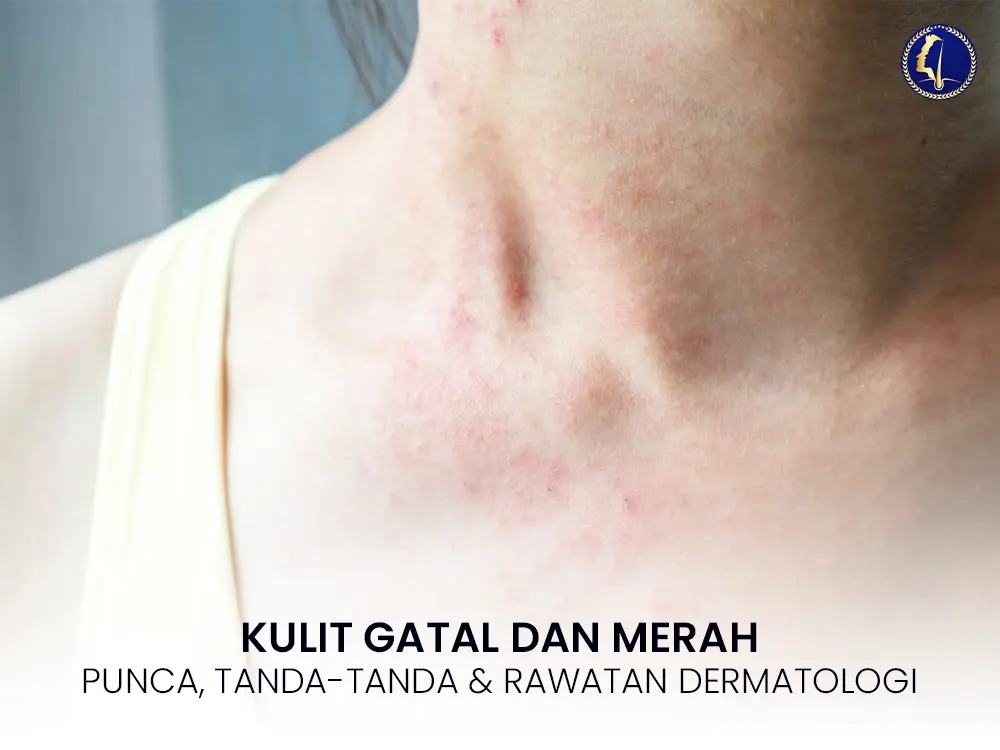
Kulit Gatal dan Merah Masalah kulit gatal dan merah adalah antara aduan kulit paling biasa di Malaysia. Ia boleh berpunca daripada pelbagai faktor seperti alergi, iritasi, jangkitan, atau keadaan kulit kronik seperti ekzema. Simptom ini bukan sahaja menjejaskan penampilan, malah boleh mengganggu keselesaan harian dan kualiti hidup. Dalam artikel ini, kami kongsikan info penting mengenai punca, gejala, dan rawatan kulit gatal dan merah yang selamat serta disyorkan oleh pakar dermatologi. 🔍 Apakah Punca Kulit Gatal dan Merah? Kulit menjadi merah dan gatal apabila berlaku keradangan atau reaksi alahan pada permukaan kulit. Antara punca biasa termasuk: 1. Ekzema (Dermatitis Atopik) Keadaan kronik yang menyebabkan kulit menjadi kering, bersisik, dan sangat gatal. Biasanya menyerang kanak-kanak dan boleh berulang. 2. Alergi Kulit (Contact Dermatitis) Berlaku apabila kulit bersentuhan dengan bahan pencetus seperti sabun, kosmetik, logam atau lateks. Boleh menyebabkan ruam merah, melepuh, atau rasa pedih. 3. Ruam Haba (Heat Rash) Berlaku apabila liang peluh tersumbat, terutama dalam cuaca panas dan lembap. Ruam merah kecil muncul bersama kegatalan. 4. Jangkitan Kulit (Fungal/Bacterial) Cendawan seperti tinea (kurap) atau bakteria boleh menyebabkan ruam merah yang merebak. Biasanya disertai rasa pedih, berair atau bersisik. 5. Ubat-ubatan atau Makanan Reaksi alahan terhadap ubat atau makanan tertentu juga boleh menyebabkan kulit gatal secara tiba-tiba. 🩺 Simptom yang Perlu Diberi Perhatian Selain kegatalan dan kemerahan, perhatikan simptom lain seperti: Kulit melepuh atau berair Kulit mengelupas atau bersisik Rasa pedih atau panas pada kawasan terlibat Pembengkakan di sekitar ruam Gatal yang teruk hingga mengganggu tidur 🧴 Rawatan untuk Kulit Gatal dan Merah Rawatan bergantung pada punca dan tahap keterukan. Antara rawatan umum yang disarankan oleh pakar kulit termasuk: 🔹 Krim Steroid Ringan Untuk mengurangkan keradangan dan gatal, terutama jika ekzema atau dermatitis. 🔹 Krim Anti-Fungal atau Anti-Bakteria Jika berpunca daripada jangkitan, rawatan topikal diperlukan. 🔹 Antihistamin Oral Membantu mengawal gatal yang disebabkan oleh alahan atau ruam. 🔹 Pelembap Kulit Medikal Untuk memulihkan lapisan pelindung kulit yang rosak, terutama dalam kes ekzema. 🔹 Elakkan Pencetus (Trigger) Kenal pasti dan elakkan bahan atau keadaan yang menyebabkan iritasi kulit. 👨⚕️ Bila Perlu Jumpa Doktor atau Pakar Kulit? Jumpa doktor sekiranya: Simptom berlarutan lebih dari 3–5 hari Gatal sangat teruk hingga mengganggu tidur Kulit mula berair, berdarah atau bernanah Ubat sapuan tidak menunjukkan kesan Anda tidak pasti puncanya Klinik kulit atau pakar dermatologi boleh melakukan ujian alergi atau kulit untuk diagnosis lebih tepat. 💡 Cara Mencegah Kulit Gatal dan Merah Gunakan sabun tanpa pewangi atau alkohol Elakkan menggaru kawasan gatal Pakai pakaian longgar & menyerap peluh Jaga kelembapan kulit dengan losyen Amalkan diet seimbang dan minum air secukupnya 📍 Kesimpulan: Rawat Kulit Gatal dan Merah dengan Selamat Kulit gatal dan merah boleh sembuh sepenuhnya jika dikenal pasti awal dan dirawat dengan betul. Jangan abaikan simptom, terutama jika berulang atau bertambah teruk. Dapatkan nasihat profesional daripada pakar kulit berdaftar di klinik yang diiktiraf. 📞 Ingin mendapatkan rawatan kulit gatal dan merah yang selamat? Hubungi klinik kulit & kecantikan glojas untuk konsultasi lanjut dan rawatan peribadi daripada doktor bertauliah.
Cara Hilangkan Kelemumur Secara Semula Jadi & Berkesan di Rumah
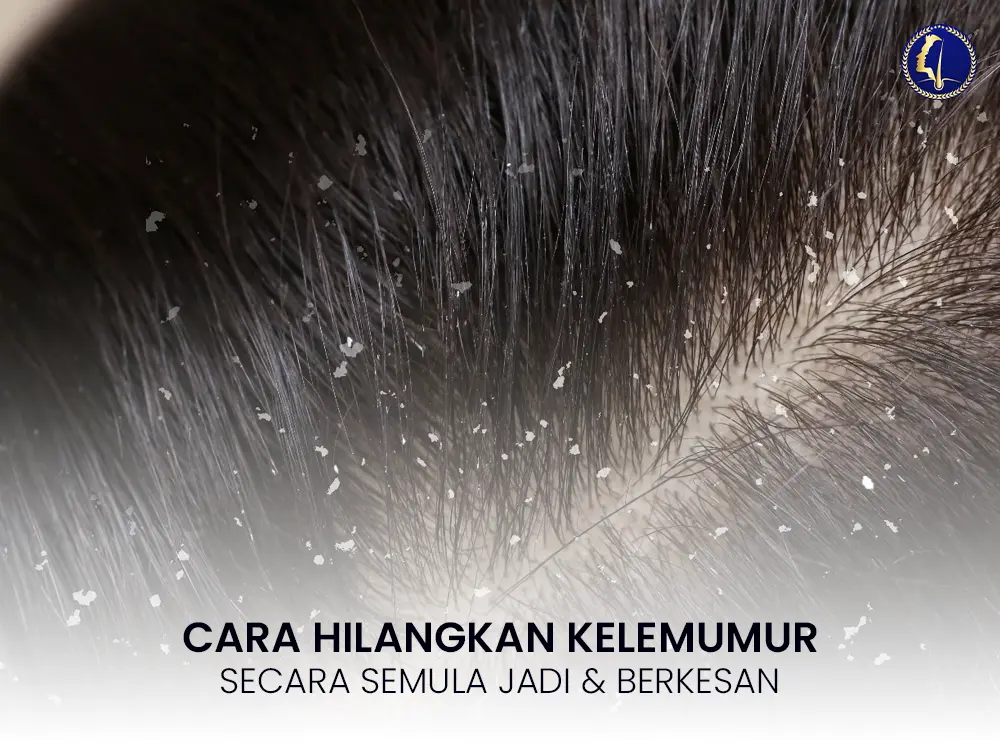
Kelemumur adalah masalah kulit kepala yang biasa dialami oleh ramai orang. Ia menyebabkan serpihan putih pada rambut dan bahu, serta boleh menyebabkan kegatalan. Dalam artikel ini, kami kongsikan cara hilangkan kelemumur secara semula jadi dan berkesan tanpa perlu berbelanja besar. Rawat Masalah Kulit Kepala & Rambut Gugur : https://glojasaesthetic.com/hair-services/hair-loss-treatment/ Apa Itu Kelemumur dan Punca-Puncanya? Kelemumur berlaku apabila kulit kepala menjadi kering atau berminyak berlebihan, menyebabkan kulit mati mengelupas. Antara punca utama: Penggunaan syampu yang tidak sesuai Kulit kepala kering atau berminyak Pertumbuhan kulat Malassezia Kurang mencuci rambut Tekanan & gaya hidup tidak sihat Petua Semula Jadi Hilangkan Kelemumur 1. Guna Minyak Kelapa Minyak kelapa mengandungi sifat anti-kulat dan melembapkan kulit kepala: Urut minyak kelapa pada kulit kepala selama 15-30 minit Biarkan semalaman atau sekurang-kurangnya 1 jam Bilas dengan syampu ringan 2. Cuka Epal Cuka epal membantu mengimbangi pH kulit kepala dan mengurangkan kulat: Campurkan 1 cawan air dengan 2 sudu cuka epal Sembur atau sapu ke kulit kepala, biarkan 15 minit Bilas seperti biasa 3. Lidah Buaya (Aloe Vera) Aloe vera menenangkan iritasi dan membantu pengelupasan sel mati: Ambil gel segar dari daun lidah buaya Urutkan ke kulit kepala, biarkan 30 minit Cuci dengan air suam 4. Baking Soda Baking soda bertindak sebagai ejen pengelupasan semula jadi: Campurkan sedikit baking soda dengan air Urut perlahan pada kulit kepala selama 2 minit Bilas tanpa syampu untuk kali pertama Tips Tambahan untuk Elak Kelemumur Berulang Elakkan berkongsi sikat Basuh rambut dengan kerap Guna syampu anti-kelemumur secara berkala Kurangkan penggunaan produk penggayaan rambut (gel, wax) Amalkan pemakanan sihat & minum air secukupnya Bila Perlu Jumpa Pakar? Jika kelemumur masih berterusan walaupun selepas mencuba rawatan semula jadi, atau kulit kepala menjadi merah & berkerak, segeralah dapatkan nasihat doktor atau pakar dermatologi. Kesimpulan Masalah kelemumur boleh dikawal dengan kaedah semula jadi yang mudah diamalkan di rumah. Yang penting, kekalkan kebersihan kulit kepala dan pilih produk penjagaan rambut yang sesuai. Cuba tips di atas dan lihat perubahan positif pada kulit kepala anda!
How to Stop Hair Fall Immediately? Permanently!
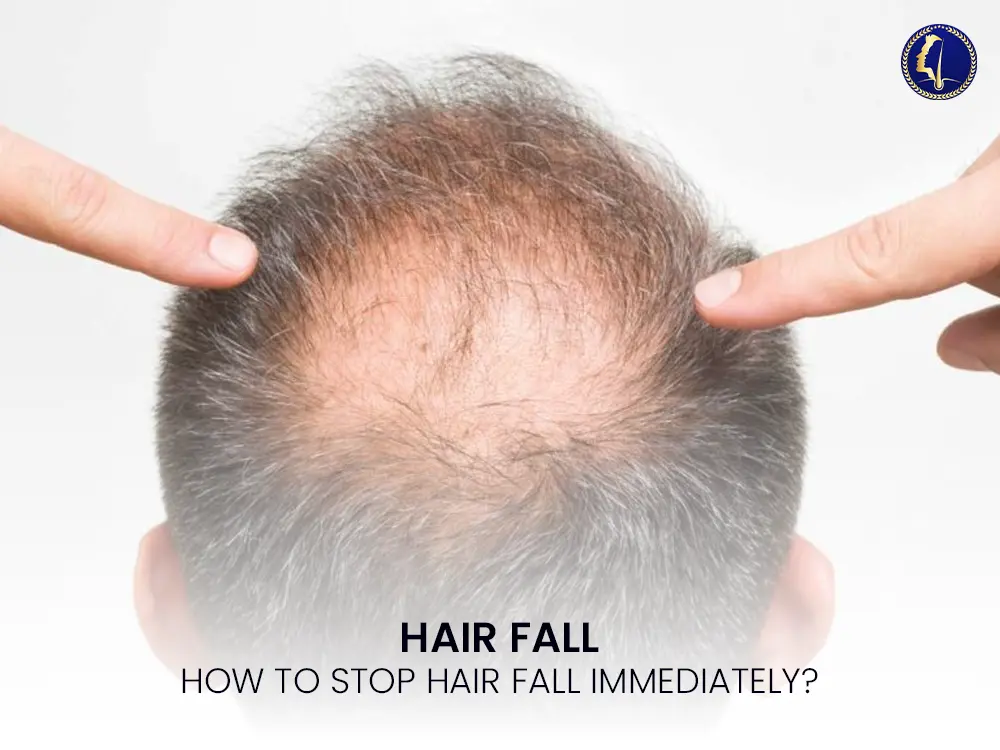
Hair fall is a common concern for millions of people worldwide. Whether caused by stress, genetics, poor nutrition, or health conditions, hair fall can be distressing and lead to a loss of self-confidence. While it’s natural to lose 50–100 strands per day, anything beyond that warrants attention. What Causes Hair Fall? Before jumping into solutions, it’s essential to understand the root causes: Genetics (Androgenetic Alopecia) – Inherited pattern baldness. Hormonal Imbalance – Pregnancy, menopause, thyroid issues. Nutritional Deficiencies – Lack of iron, protein, vitamin D, and B vitamins. Stress – Physical or emotional stress can trigger telogen effluvium. Poor Hair Care Practices – Excessive styling, heat, and chemical treatments. Medical Conditions – PCOS, autoimmune diseases, scalp infections. How to Stop Hair Fall Immediately (Quick Fixes) 1. Scalp Massage with Essential Oils Massaging your scalp improves blood circulation. Use oils like coconut, rosemary, or castor oil. Warm it slightly and massage for 5–10 minutes. 2. Apply Onion Juice Onion juice is rich in sulfur, which boosts collagen production and hair strength. Apply it on the scalp, leave it for 15–30 minutes, then rinse with a mild shampoo. 3. Use Aloe Vera Aloe vera soothes the scalp and reduces dandruff. Apply fresh aloe gel directly to the scalp and let it sit for 30 minutes. 4. Cold Water Rinse Rinsing hair with cold water seals the hair cuticle and prevents excessive hair loss. 5. Avoid Heat and Chemicals Stop using straighteners, curling irons, and harsh dyes immediately. Let your hair rest. Long-Term Solutions to Stop Hair Fall Permanently 1. Healthy Diet Consume foods rich in iron, protein, zinc, biotin, and vitamins A, C, D, and E. Include leafy greens, eggs, berries, nuts, and fish in your meals. 2. Stay Hydrated Water plays a vital role in hair cell health. Drink at least 8 glasses of water a day. 3. Regular Exercise Physical activity helps manage stress and improves overall circulation, including to the scalp. 4. Hair Supplements Biotin, collagen, iron, and multivitamins (with medical guidance) can help if your diet is lacking. 5. Reduce Stress Practice meditation, yoga, deep breathing, or mindfulness to lower cortisol levels. 6. Medical Treatments Minoxidil (Rogaine): FDA-approved topical treatment for hair regrowth. Finasteride (for men): Oral medication that blocks DHT, a hormone linked to hair loss. PRP Therapy: Platelet-Rich Plasma injections to stimulate hair growth. Hair Transplant: A surgical option for permanent results. Best Hair Care Routine to Prevent Hair Fall Use a sulfate-free, mild shampoo and conditioner Avoid brushing wet hair Trim regularly to prevent split ends Use a wide-tooth comb Avoid tight hairstyles Sleep on a silk pillowcase 5 Frequently Asked Questions (FAQs) 1. Can hair fall be reversed completely? Yes, depending on the cause. Nutritional and lifestyle-related hair fall is reversible. Genetic hair loss is harder to reverse but manageable with treatment. 2. How long does it take to see results? It usually takes 3–6 months of consistent care and treatment to see visible results. 3. Is daily hair washing harmful? Washing daily with a mild shampoo is okay for oily scalps. For dry scalps, 2–3 times a week is better. 4. Does cutting hair stop hair fall? Cutting doesn’t stop hair fall from the root cause but helps manage breakage and split ends. 5. What is the best shampoo to stop hair fall? Look for shampoos with ingredients like biotin, keratin, caffeine, and natural oils. Avoid sulfates and parabens. By understanding the causes and applying a combination of immediate and long-term solutions, you can take control of your hair fall problem. The key is consistency, patience, and the right approach tailored to your needs. If hair fall persists, consult a dermatologist or trichologist for professional guidance. GLOJAS Specialist Clinic offers expert hair loss treatment through personalized, evidence-based plans developed by board-certified specialists. Using FDA- and CE-approved technologies like PRP therapy and precision hair restoration, we ensure safe, effective results. Comprehensive aftercare and follow-up support reinforce patient trust, making GLOJAS a reliable authority in hair restoration solutions. Read More : Hair Transplant Malaysia
Whiteheads: Causes, Treatment & How to Prevent Acne Bumps Effectively
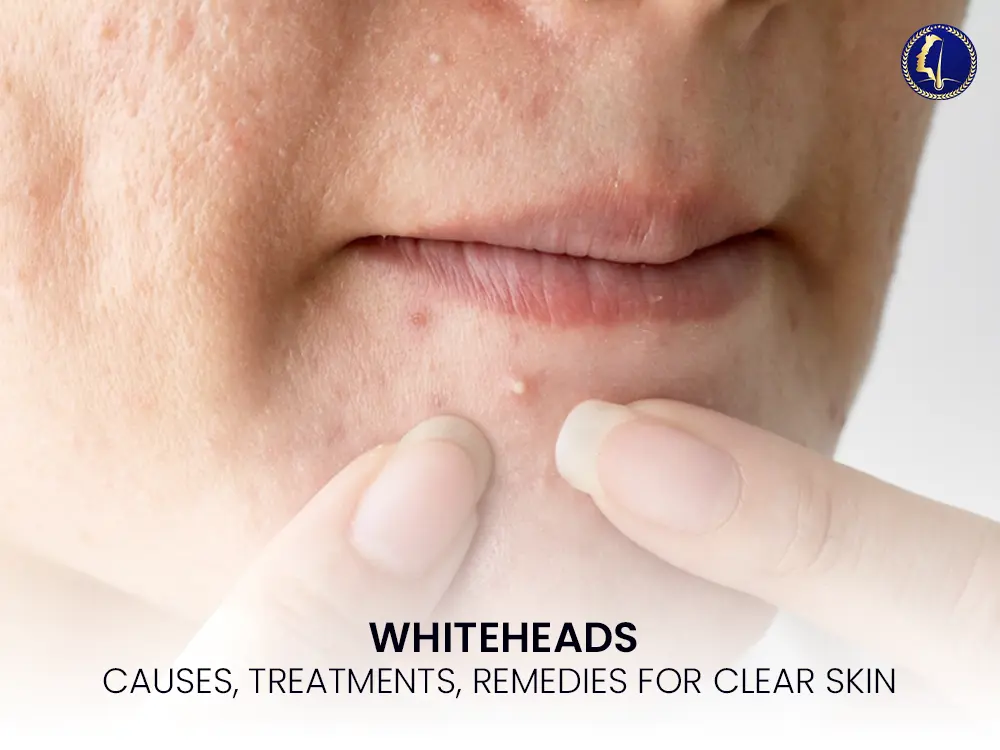
What Are Whiteheads? Whiteheads are a form of acne (acne vulgaris), also known as closed comedones. They pop up when your pores get clogged with sebum (amount of oil), dead skin cells, and other debris. Whiteheads and blackheads are two different things which blackheads have an open pore, whiteheads have a closed opening, giving them that characteristic white or flesh-colored bump. You’ll often find them on your face, especially on the nose, forehead, and chin. These pesky tiny bumps can be triggered by hormonal shifts, excess oil production, not enough exfoliation, or certain skincare products. While they’re usually harmless, ignoring them can lead to inflammation, bacterial infections, or even acne scars. To prevent whiteheads, you can try gentle exfoliation, topical retinoids, salicylic acid, chemical peels, or even professional extractions at a dermatology or aesthetic clinic. Sticking to a consistent skincare routine and opting for non-comedogenic products can really help keep them at bay. Causes of Whiteheads 1. Excess Sebum (Oil) Production Hormonal changes, particularly during puberty, menstruation, pregnancy, or stress, can increase oil production and clog pores. 2. Dead Skin Cell Accumulation If dead skin isn’t exfoliated properly, it mixes with oil and blocks the hair follicle, forming whiteheads. 3. Bacterial Growth The presence of Propionibacterium acnes bacteria inside clogged pores can worsen inflammation and lead to acne. 4. Hormonal Imbalances Fluctuations in hormones can cause the sebaceous glands to become overactive, leading to clogged follicles. 5. Pore-Clogging Skincare Products Using comedogenic (pore-clogging) makeup or skincare can trigger whitehead formation, especially in those with sensitive skin. 6. Diet & Stress While not the direct cause, high sugar, dairy, or processed foods, combined with elevated stress levels, may worsen whiteheads in some individuals. Where Do Whiteheads Commonly Appear? Whiteheads can affect any area with oil glands. Common locations include: Face (especially nose, chin, forehead) Chest and back Upper arms Buttocks and genitals These areas are prone to clogged pores due to increased oil production and friction from clothing or hygiene habits. Are Whiteheads Contagious? No — whiteheads are not contagious. You cannot spread it through skin-to-skin contact. They are caused by internal factors such as oil production and clogged follicles, not infections or viruses. How Long Do Whiteheads Last? With the right skincare routine, most whiteheads resolve within 3 to 7 days. However, without proper treatment or if frequently picked or squeezed, they may persist longer and result in skin irritation or scarring. Best Whitehead Removal Treatments In Malaysia Topical RetinoidsRetinoids speed up cell turnover, keeping pores clear and preventing new whiteheads. Studies show adapalene reduces acne lesions by up to 60% in 12 weeks. OTC options like Differin are mild, while tretinoin or tazarotene may require prescriptions for stronger results to treat whiteheads. Salicylic AcidA proven beta hydroxy acid, salicylic acid penetrates oil-filled pores to dissolve buildup. Research confirms regular use reduces comedones by 47% within 6 weeks. Found in cleansers, toners, and serums, it’s especially effective for oily or acne-prone skin types. Benzoyl PeroxideThis gold-standard acne treatment kills Cutibacterium acnes bacteria and calms inflammation. Clinical trials show a 50–70% reduction in acne within 8–12 weeks. Start with 2.5–5% to limit irritation before moving to stronger formulas if needed. Hydrocolloid Pimple PatchesHydrocolloid dressings absorb pus, oil, and debris, creating a moist environment that speeds healing. A study found they reduce lesion size within 24 hours. Teens love them for overnight use, and they also protect pimples from picking. Clay MasksRich in minerals, clay absorbs excess sebum and tightens pores. Research on kaolin and bentonite shows they reduce oil by 36% after consistent use. Applying 1–2 times a week helps prevent clogged pores and improves skin clarity over time. Professional Treatments Dermatologists or medical aesthetic specialists may recommend: Chemical peels Microdermabrasion Laser treatments Prescription-strength retinoids or oral antibiotics Home Remedies (Natural Options) While not substitutes for medical treatments, natural ingredients can support clearer skin: Tea Tree Oil: Natural antibacterial; use diluted with a carrier oil. Aloe Vera: Soothes inflammation and redness. Apple Cider Vinegar: Acts as a natural astringent. Green Tea: Rich in antioxidants, reduces sebum and soothes skin. Honey & Cinnamon: Antibacterial blend that calms breakouts. Prevention Tips Wash your face twice daily with a gentle cleanser. Exfoliate 2–3 times a week using chemical exfoliants (like salicylic acid). Avoid touching your face. Use non-comedogenic skincare and makeup. Change pillowcases regularly. Stay hydrated and eat a skin-friendly diet. Frequently Asked Questions 1. How do you get rid of whiteheads? Use gentle exfoliation, salicylic acid, or topical retinoids to clear clogged pores. Professional extraction or chemical peels at an aesthetic clinic can help stubborn cases. 2. What is the main cause of whiteheads? Whiteheads form when pores are clogged with sebum (oil), dead skin cells, and debris, often triggered by hormonal changes, stress, or certain skincare products. 3. Will whiteheads go away on their own? Mild whiteheads may clear naturally over time, but persistent ones often require skincare treatments or professional intervention to prevent scarring and new breakouts. 4. Should you squeeze whiteheads? No. Squeezing can cause inflammation, infection, and acne scars. It’s safer to use proper skincare or seek professional extraction. When to See a Professional If whiteheads: Do not improve with OTC treatments Appear persistently on the chest, back, or buttocks Cause emotional distress or affect your confidence → It’s time to consult a dermatologist or certified aesthetic doctor. GLOJAS offers expert-led consultations and tailored whitehead solutions in Kuala Lumpur. Reveal Clear, Smooth Skin with Expert Whitehead Treatment in Malaysia At GLOJAS Specialist Clinic, we believe that true skin confidence starts with expert care. Whether you’re facing recurring skin issues, looking to refresh your complexion, or want to explore advanced aesthetic treatments, our LCP-certified doctors are here to guide you every step of the way. Located in the heart of Kuala Lumpur, our clinic combines medical-grade technology with personalized care to deliver results that are safe, natural, and lasting. From clinical consultations to custom skincare solutions, GLOJAS offers a comprehensive approach tailored to your skin’s unique needs. View this